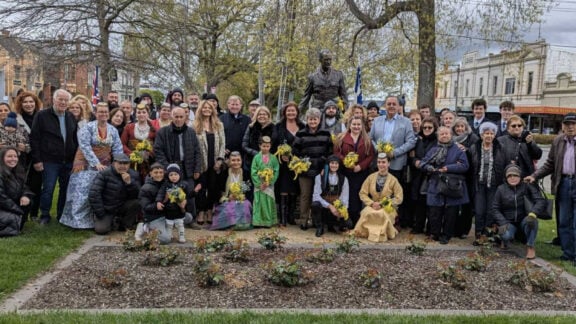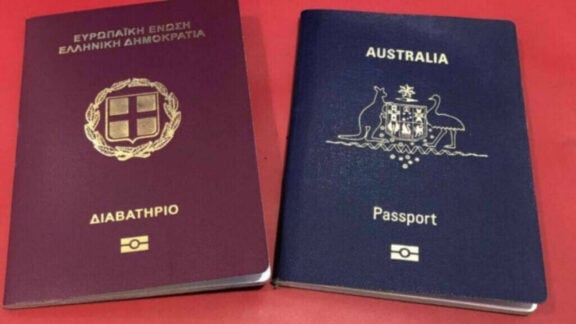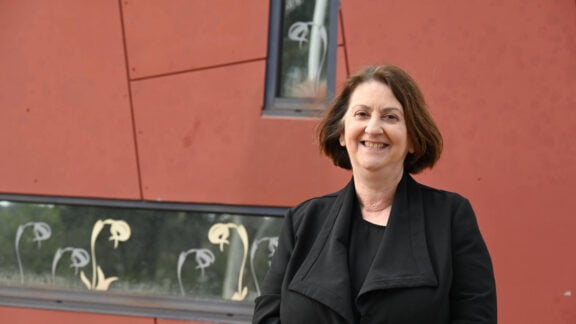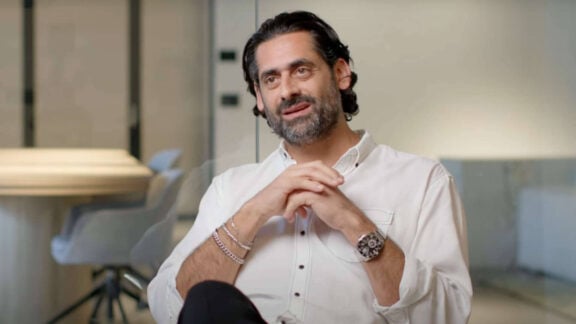“We won the war to now win the peace” said Danny Pearson Victoria’s Assistant Treasurer channelling Field Marshal Montgomery from 1945.
Mr Pearson fronted multicultural media today, along with Ross Spence, the Minister for Multicultural Affairs.
“The economy is strong; it is forecast to grow by 3.25 per cent next financial year and off the back of 5.5 per cent in his current financial year.”
Mr Pearson said that there will be a 2.25 per cent growth in 2023-24 and 2.75 per cent in 2024-25.
“The bounce back is faster than predicted and labour force participation is at a near record high.
Neos Kosmos asked if the high employment numbers reflect the two years of absence of foreign students, migrants, and tourists due to the pandemic.
Mr Pearson pointed to 20,000 new foreign students that arrived and said that the Commonwealth is responsible for migration. He added that Victoria will do what it can to augment migration, tourism, and foreign student numbers.
He said that Victoria’s overseas business offices are working to find new markets for Victorian services like education.
“As the predictions suggest we will have over 6 million Victorians by 2025” Mr Pearson said to Neos Kosmos.
“Industries are roaring back to life, Victorians are crowding back to jobs, to restaurants theatres, and stadiums and business conferences.
“Some people would have you believe that tumbleweeds are blowing down Bourke Street Mall, but nothing could be further from the truth.”
The budget is big on health, skills, education, and manufacturing. A whopping $12 billion is targeted on the state’s health system which almost crumbled during the last two years of the pandemic.
There will be an additional 400 triple-0 call centre workers delivered for the Emergency Services Telecommunications Authority (ESTA), at a tune of $333 million. Another $124 million has been allocated for Ambulance Victoria to recruit 90 more paramedics.
The budget includes a $1.5 billion plan to tackle the state’s swelling elective surgery waiting list.
There is $900 million to build the Melton Hospital in Melbourne’s booming west and $500 million to expand the Barwon Women’s and Children’s Hospital.
A further $236 million will be spent on expanding emergency departments at Werribee Mercy Hospital in Melbourne’s west and Casey Hospital in the east.
And given that the pandemic’s not over, $4.2 billion has been aside for rapid antigen tests and other COVID-19 measures. Another $1.3 billion will be spent to implement the recommendations of the state’s mental health royal commission.
Education is another big-ticket item. “To grow the economy, we need to have a world class education system to support that. Mr Pearson said.
“This budget includes $1.8 billion for 13 new schools and 65 school upgrades, including upgrades to 36 special schools and that means since 2015 we’ve upgraded every single special school.
“There is $729 million to recruit around 1,900 teachers giving more time to prepare and focus on students particular needs.”
Mr Pearson called it “the biggest reform of VCE since its conception” prioritised on ensuring Victorians have “decent and secure jobs.”
“The budget has a $246 million investment to fund the sick pay guarantee, $120 million to Victoria industry fund and $353 million to help the creative sector, tourism and major events, bounce back from the pandemic.”
“Victorians are rediscovering their great love affair with our fantastic metropolis being Melbourne and they’re coming back and it’s roaring to life.’
Mr Pearson also touted the “one-off payment of $250 to all Victorian households to use the energy compare website to find the best provider, and I think that could save households in excess of $300 a year.”
Ross Spence the minister for multicultural affairs said over $23 million has been earmarked for multicultural issues.
Ms Spence mentioned Neos Kosmos and its work on developing a “network” of independent multicultural media the Independent Multicultural Media Australia (IMMA)
“We want to thank the multicultural media for the support they provide the Victorian government in getting out crucial health and safety information to multicultural communities.”
The minster added that the multicultural media network was looked upon positively by government, who is keen to work with such a body.
Part of multicultural funding will go to “develop high quality professional and sustainable interpreting and translating sector.”
There is money for the next phase of Victoria’s African communities action plan and for “essential support services for migrant refugee communities and people seeking asylum.” Mr Spence said that there will be an upgrade of multicultural community facilities and the delivery of festivals.
“We will keep on celebrating our state’s rich and diverse multicultural heritage.”
The communities task force developed during the pandemic by the Andrews government will receive $3.7 million.
“It will continue the important work to support communities to respond to the impacts of COVID and will support the continuation of place-based local partnerships and communications to our CALD communities, to ensure that they’ve got access to health and other key information in audio-visual formats.”
Ms Spence said that the funding was there to ensure that “no one gets left behind in our recovery from the pandemic.”
“We recognise the importance of making sure that all Victorians can access in language information services, and we will streamline and improve our government purchases interpreting and translation services.”
Other areas targeted were, training, employment and health and well-being which includes over $1 million for “eight employment brokers embedded in community organisations to improve job readiness and pathways to employment.”
This is a big budget that is aimed at thanking and winning the loyalty of Victorians, the worst hit Australians during the pandemic.
The forecast deficit is also big. The assistant treasurer expects a $7.9 billion deficit in 2022/23, $3.3 billion in 2023/24 and $1.1 billion in 2024/25, before a predicted $650m surplus in 2025/26. An operating cash surplus of $1.3 billion forecast in 2022/23, growing to $5.5 billion in 2025/26.
Keynesian economics are both fashionable and necessary again in advanced economies, as all are now spending to repair two years of pandemic damage.









